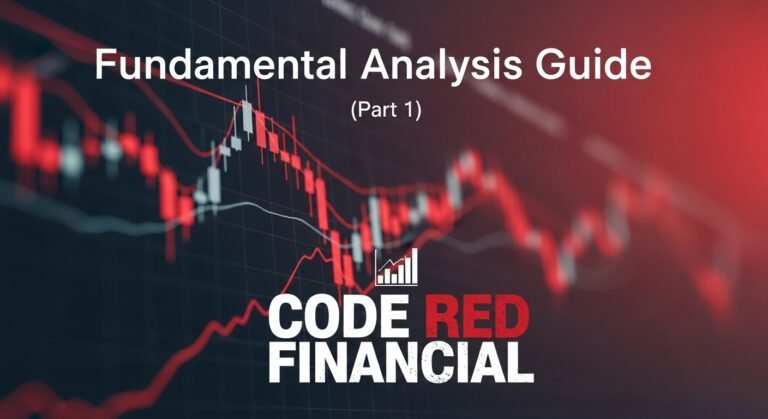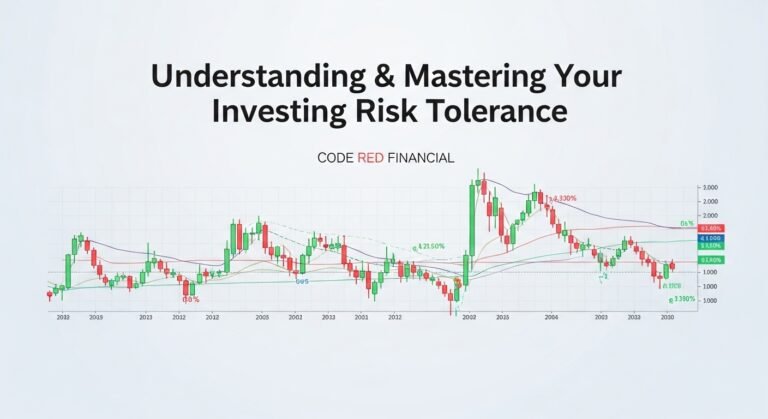
The Foundation of Every Investment Journey
It has been said that every financial journey starts with a simple, yet profound, truth: to achieve growth, you must take on risk. But how much risk is right for you? That is the fundamental question that lies at the heart of investment risk tolerance.
Far from being a dry, academic concept, your risk tolerance is the emotional, psychological, and financial compass that guides your decisions. It is the invisible boundary that determines how you react when the stock market zigs when you hoped it would zag. In the world of personal finance, knowing this single element is arguably as crucial as knowing your net worth or your financial goals. It is the cornerstone upon which a sustainable, stress-free, and ultimately successful investment strategy is built.
If you’ve ever felt a pang of anxiety watching market headlines or considered selling your holdings during a dip, you’ve already had a firsthand encounter with your risk tolerance. This article will demystify this critical concept, explain the factors that shape it, and show you how to use your personal risk profile to build a portfolio that truly works for you.
What Exactly Is Investment Risk Tolerance?
In the simplest terms, risk tolerance is the degree of uncertainty and potential financial loss an investor is willing and able to withstand in pursuit of higher returns.
The definition is dual-layered, encompassing two key components:
- Willingness to Take Risk (The Emotional Side): This is the psychological comfort level you have with market fluctuations. It’s how you feel when your portfolio value drops by 10%, 20%, or more. Are you able to remain calm, seeing it as a temporary setback or even a buying opportunity? Or does the fear of loss trigger a desire to sell everything to stop the bleeding? This is the subjective, emotional factor.
- Ability to Take Risk (The Financial Side): This is the objective reality of your financial situation. How much money can you afford to lose without it derailing a critical financial goal, like retirement or a child’s education? This capacity is dictated by factors like your income, savings, emergency fund size, and most importantly, your time horizon.
An optimal investment strategy aligns your willingness with your ability. If you are willing to take on high risk but don’t have the financial ability to recover from a loss (e.g., you need the money soon), your strategy is too aggressive. Conversely, if you have the ability to take on more risk but are too emotionally conservative, you risk falling short of your long-term financial goals due to insufficient growth.
The Spectrum of Risk Tolerance
While every investor is unique, risk tolerance is generally categorized along a spectrum that helps define your investment approach:
- Conservative Investor: Prioritizes the preservation of capital above all else. They prefer investments with minimal volatility, even if it means accepting lower potential returns. They are highly averse to seeing their account balance drop and often favour fixed-income assets like bonds, CDs, and cash equivalents.
- Moderate Investor: Seeks a balance between growth and safety. They are willing to accept some level of market fluctuation to achieve higher returns than a conservative portfolio, but they still want protection against major losses. Their portfolio is often a blend, such as a mix of stocks and bonds (e.g., a “balanced” 60% stock / 40% bond allocation).
- Aggressive Investor: Primary goal is maximum capital appreciation and is willing to accept high volatility and the potential for substantial losses in the short term. They are generally unconcerned by market downturns and may see them as opportunities. Their portfolio is heavily weighted toward growth-oriented assets like individual stocks, sector funds, and emerging markets.
5 Key Factors That Influence Your Personal Risk Tolerance
Your risk tolerance is not static; it is a dynamic element shaped by your personal circumstances, goals, and even your life experience. Understanding these core factors is crucial for an honest and accurate assessment:
1. Time Horizon: The Ultimate Arbitrator
Perhaps the single most important factor. Your time horizon is the length of time until you anticipate needing the money you are investing.
- Long Time Horizon (15+ years): If you are a young professional saving for retirement decades away, you have a longer time horizon. This means you have ample time to ride out inevitable market downturns. A temporary 30% drop now can be recovered over the next decade. Therefore, you generally have a higher ability to take risk.
- Short Time Horizon (0-5 years): If you are saving for a down payment on a house in three years, a market crash could force you to sell your investments at a major loss right when you need the cash. Your risk tolerance must be lower, leaning toward safer, more liquid investments.
2. Financial Capacity and Security
How robust is your financial foundation? Your current financial health directly impacts your ability to absorb a loss.
- High Capacity: If you have a stable, high income, a substantial emergency fund, low debt, and other non-investment assets (like a paid-off home or pension), you have a greater cushion against market losses. You are financially able to take on more risk.
- Low Capacity: If you have an unstable income, high consumer debt, or are relying on your investments for near-term living expenses, your financial capacity for risk is low, regardless of how “aggressive” you feel.
3. Investment Goals and Objectives
What are you investing for? Different goals necessitate different levels of risk.
- Goal of simply preserving capital (like an emergency fund) dictates a conservative approach.
- Maximized long-term growth (like retirement in 30 years) allows for an aggressive approach.
- A goal with a mid-range time frame (like college tuition in 10 years) might call for a moderate, balanced strategy.
4. Age and Life Stage
While age is related to time horizon, it also speaks to your current earning power and expenses.
- Younger Investors: Often have higher risk tolerance because they have decades of future earnings to replace any potential losses and more time for compounding growth.
- Older/Retired Investors: Typically have a lower risk tolerance because they need to preserve their nest egg to generate income and have a limited time to make up for significant losses.
5. Behavioral and Emotional Comfort
This is the psychological willingness component. Some people are naturally more resilient to stress and uncertainty; others are more cautious. You must be brutally honest about how you truly react under pressure, not how you think a smart investor should react.
- Have you ever panic-sold during a market downturn?
- Do the nightly financial news headlines genuinely cause you stress?
If the thought of a 20% portfolio drop keeps you up at night, your true risk tolerance is lower than you might have assumed. The best investment strategy is the one you can stick with during difficult times.
The Dangers of Ignoring Your Risk Tolerance
Investing without understanding your risk tolerance is like setting sail without a rudder: you are leaving your financial future to the whims of the market and your own unpredictable emotions. Ignoring this foundational concept leads to two common, and costly, mistakes:
- Becoming Too Aggressive and Panic-Selling: An investor with low emotional tolerance who builds an aggressive, high-risk portfolio is a ticking time bomb. When the inevitable market correction occurs, the panic becomes unbearable, and they commit the ultimate investing sin: selling low. By locking in losses, they miss out on the eventual recovery and destroy their long-term returns.
- Becoming Too Conservative and Failing to Grow: An investor with a high capacity for risk but low willingness may default to an overly conservative portfolio. While they avoid the anxiety of market dips, their investments may fail to generate the necessary returns to keep pace with inflation or meet their long-term goals, effectively sacrificing future financial freedom for current comfort.
Taking Action: How to Assess Your Risk Tolerance
Determining your true risk tolerance requires reflection and honesty. It is a process best approached by combining the objective with the subjective:
- Take a Risk Tolerance Questionnaire: Many reputable personal finance websites and brokerage firms offer structured questionnaires designed to gauge your comfort level with hypothetical market scenarios, your financial knowledge, and your emotional responses.
- Review Historical Volatility: Look at the historical performance of different asset allocations (e.g., a 100% stock portfolio vs. a 60/40 stock/bond mix). Ask yourself: “Could I handle a 30% loss, knowing it took three years to recover, or would I have sold out of fear?”
- Consult a Financial Professional: A certified financial advisor (CFA) or a planner can use specialized tools and in-depth discussions to provide an objective, professional assessment of your capacity and willingness, ensuring your portfolio is optimally aligned with your goals.
Your Personalized Investment Blueprint
Your investment risk tolerance is not a hurdle; it’s a tool. It is the key to creating a personalized investment blueprint that is robust enough for growth and resilient enough to handle volatility.
The goal is not to eliminate risk—which is impossible for a growth-oriented investor—but to manage it effectively. By honestly assessing your willingness (your emotional comfort) and your ability (your financial capacity), you can select an asset allocation you are psychologically prepared to stick with, whether the market is roaring or retreating.
In investing, consistency is paramount. Understanding and respecting your personal risk tolerance is the single most effective way to ensure you remain invested over the long run, allowing the unparalleled power of compounding to work its magic and secure your financial future.
Disclaimer: This article is for informational purposes only and does not constitute financial or investment advice. Consult with a qualified 1 financial advisor or tax professional before making any decisions about your investments or retirement accounts






